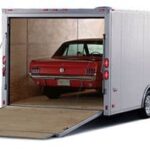Imagine that sinking feeling when you return to your car, bags in hand, ready to head home, only to see your keys mockingly sitting on the driver’s seat, while you’re locked out. It’s a situation many drivers face, and it always seems to happen at the most inconvenient times. Don’t panic. You’re not alone, and more importantly, you have options. As your trusted automotive experts at cars.edu.vn, we’re here to guide you through proven methods to retrieve your keys and get back on the road safely and efficiently.
The Golden Rule: Prevention with Spare Keys
Toyota Car Keys
The absolute best way to handle a car lockout is to prevent it from happening in the first place. Our top tip, and one we can’t stress enough, is to always have a spare set of car keys. Think about it – the moment you purchase a new vehicle, making a duplicate key should be as routine as setting up your car insurance. Ideally, consider having not just one, but two spare keys. Keep one at home in a secure, memorable location and entrust the other to a reliable friend or family member who can act as your emergency key custodian. This simple step can save you significant time, stress, and money should you ever find yourself locked out. With a spare key readily available, a quick call and a short wait are all that stand between you and getting back into your car without any fuss.
Leverage Technology: Manufacturer’s Mobile Apps
In today’s connected world, technology offers a seamless solution to car lockouts. Many modern vehicles come equipped with manufacturer-developed mobile applications that allow you to control various car functions remotely, and unlocking your doors is often a key feature. When you purchase your car, especially a newer model, inquire about whether a companion app is available. Setting up and pairing this app with your vehicle is a proactive step towards lockout prevention. These apps often offer more than just door unlocking; some include features like vehicle location services (using GPS to pinpoint your car’s whereabouts), remote start, and even horn and light activation to help you find your car in a crowded parking lot. The convenience extends to families too, as some manufacturers permit multiple users to be authorized on the app, meaning a family member could unlock your car remotely even if you’ve locked your phone inside along with your keys.
DIY Methods for Older Vehicles: String and Wire Hangers
While modern technology is incredibly helpful, older vehicles often require a more hands-on approach. If you drive an older model with manual door locks, you might be surprised to learn that common household items like string or a wire coat hanger can be surprisingly effective tools for unlocking your car door.
The String Technique
For vehicles with traditional, vertically oriented door locks, a piece of string, twine, shoelace, or even fishing line can be maneuvered to snag the lock and pull it upwards. This method requires a bit of dexterity and patience. You’ll need a length of string several feet long. Create a slip knot or a loop in the middle of the string. Carefully wedge the string into the top corner of your driver’s side door – the door seam is usually the most accessible entry point. The goal is to maneuver the loop around the door lock button inside. Once you feel the loop is securely around the lock, gently pull upwards on both ends of the string. With a bit of luck and finesse, you should be able to lift the lock and regain entry to your vehicle.
The Wire Coat Hanger Method
Similar to the string method, a wire coat hanger can be employed to manipulate manual locks, particularly on older car models. Straighten out a wire coat hanger, leaving a hook shape at the end. Carefully insert the hanger into the door frame, again using the door seam as your entry point. You’ll need to maneuver the hooked end of the hanger inside the door to catch and manipulate the locking mechanism. This might involve some trial and error as you feel around for the lock rods. The aim is to mimic the action of a key by pushing or pulling the correct levers to pop the lock into the unlocked position. Pliers can be helpful in bending the hanger to achieve the optimal shape and leverage if you find it difficult to manipulate by hand.
Utilizing Specialized Tools: The Inflatable Wedge
For those who frequently find themselves locked out, investing in an inflatable wedge kit can be a worthwhile consideration. These kits are designed specifically for unlocking car doors without causing damage. The inflatable wedge is inserted into the door jamb and then inflated using a hand pump. As the wedge inflates, it creates a small gap between the car door and the frame. This gap provides just enough space to insert a long reach tool – often included in the kit – which can then be used to press the unlock button or manually manipulate the door lock. A significant advantage of using an inflatable wedge is that it minimizes the risk of scratching your car’s paint or causing other cosmetic damage, making it a gentler method compared to more forceful techniques.
When to Call for Professional Help: Locksmiths and Roadside Assistance
If DIY methods fail or seem too risky, or if you simply prefer professional assistance, reaching out to a locksmith or roadside assistance service is your next best step. If you have roadside assistance coverage as part of your car insurance policy or through a separate provider, this is often the most convenient and cost-effective option. Roadside assistance services are accustomed to handling car lockouts and have specialized tools and expertise to get you back into your car quickly and safely. Keep in mind that some policies may limit the number of free lockout services per year, so it’s wise to check your coverage details. If you don’t have roadside assistance, a local auto locksmith is another excellent resource. Auto locksmiths specialize in vehicle entry and security systems and can typically respond quickly to lockout situations. Many towing companies also offer car lockout services as part of their offerings.
Emergency Situations: Contacting Law Enforcement
In certain urgent scenarios, time is of the essence, and waiting for standard solutions is not an option. If a child or pet is locked inside the car, particularly in extreme weather conditions, the situation becomes critical. In such emergencies, do not hesitate to contact your local police department immediately. Law enforcement officers are trained to respond to emergencies and have tools, such as slim jims, that can quickly unlock car doors. In extreme cases where immediate entry is crucial for safety, police may even need to break a window to gain access. While window replacement is an inconvenience, it is a minor concern compared to the potential danger faced by a child or animal trapped in a locked vehicle. Remember, safety is paramount, and in an emergency, contacting the police is the fastest and most responsible course of action.
New Car Safety Features: A Step Towards Lockout Prevention
The automotive industry is continuously innovating to enhance vehicle safety and convenience, and modern cars often incorporate features designed to prevent accidental lockouts. Many newer vehicles have systems that automatically prevent you from locking your keys inside the car. For example, some cars will detect the key fob inside the vehicle and prevent the doors from locking electronically. Others may provide audible warnings or visual cues if you attempt to lock the car with the keys inside. When purchasing a new car, it’s worth inquiring about and understanding these safety features. Exploring the safety technology available in new vehicles, like those offered at Longo Toyota, can provide peace of mind and reduce the likelihood of future lockout situations.
Locked out of your car? It’s a frustrating experience, but armed with these methods, you’ll be well-prepared to handle it effectively. Remember, prevention is always better than cure – so prioritize spare keys and familiarize yourself with your car’s technology. But if you do find yourself staring at your keys through the window, know that you have options, from simple DIY tricks to professional assistance, to get back on the road.

